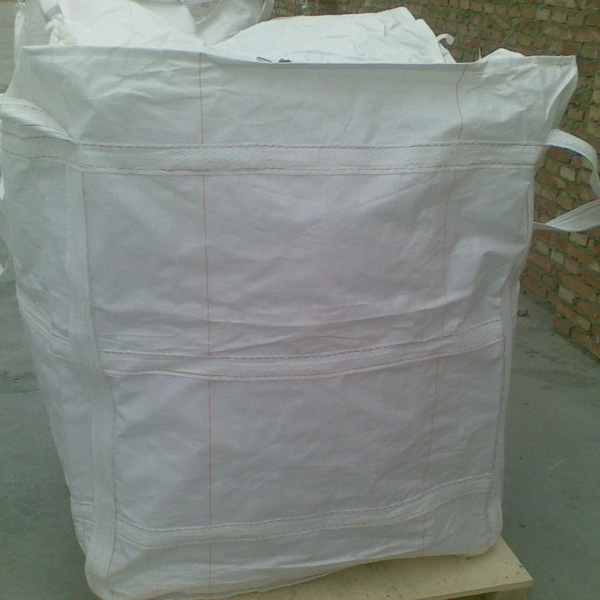Троклосен натрийн дигидрат
Танилцуулга
Натрийн дихлоризоцианурат дигидрат (SDIC дигидрат) нь хүчтэй ариутгах шинж чанараараа алдартай, гайхалтай, олон талын ус цэвэршүүлэх нэгдэл юм. Талст нунтаг тул энэ химийн бодис нь янз бүрийн хэрэглээнд усны чанарыг хадгалах, аюулгүй байдал, цэвэр байдлыг хангахад чухал үүрэг гүйцэтгэдэг.
Техникийн тодорхойлолт
Ижил нэр(үүд):Натрийн дихлоро-с-триазинетрион дигидрат
Химийн гэр бүл:Хлоризоцианурат
Молекулын томъёо:NaCl2N3C3O3·2H2O
Молекулын жин:255.98
CAS дугаар:51580-86-0
EINECS дугаар:220-767-7
Ерөнхий шинж чанарууд
Буцлах цэг:240-250 ℃, задардаг
Хайлах цэг:Өгөгдөл байхгүй байна
задралын температур:240-250 ℃
PH:5.5-7.0 (1% уусмал)
Бөөн нягтрал:0.8-1.0 г/см3
Усанд уусах чадвар:25г/100мл @ 30℃
Гол онцлогууд
Хүчтэй ариутгал:
SDIC Dihydrate нь хлорын өндөр агууламжтай хүчтэй ариутгагч бодис бөгөөд өргөн хүрээний бактери, вирус болон бусад бичил биетнийг устгахад онцгой үр дүнтэй байдаг. Түргэн үйлчилдэг шинж чанар нь усыг хурдан цэвэрлэж, усаар дамжих өвчнөөс хамгаалдаг.
Тогтвортой байдал ба уусах чадвар:
Энэхүү бүтээгдэхүүн нь онцгой тогтвортой байдал, усанд уусдаг тул хэрэглэхэд хялбар, үр дүнтэй байдаг. Түүний хурдан уусдаг нь ариутгалын бодисыг хурдан бөгөөд жигд хуваарилж, янз бүрийн ус цэвэршүүлэх хэрэгцээнд найдвартай шийдэл болдог.
Хэрэглээний олон талт байдал:
SDIC Dihydrate нь усан сан, ундны ус цэвэрлэх, бохир ус цэвэрлэх, үйлдвэрлэлийн усны систем зэрэг янз бүрийн үйлдвэр, орчинд өргөн хэрэглэгддэг. Түүний олон талт байдал нь том хэмжээний ус цэвэрлэх байгууламж болон жижиг хэмжээний хэрэглээнд тохиромжтой сонголт болгодог.
Урт хугацааны нөлөө:
SDIC дигидрат хлорыг тасралтгүй ялгаруулж байгаа нь халдваргүйжүүлэлтийн үр нөлөөг уртасгахад хувь нэмэр оруулдаг. Энэхүү урт наслалт нь бохирдуулагчаас тасралтгүй хамгаалалтыг баталгаажуулж, ус цэвэршүүлэх хэрэгцээнд зориулж зардал багатай шийдэл болж өгдөг.
Байгаль орчны анхаарах зүйлс:
Бүтээгдэхүүн нь байгаль орчны хариуцлагыг харгалзан бүтээгдсэн. Түүний үр дүнтэй ариутгах шинж чанар нь бага тунг шаарддаг бөгөөд энэ нь хүрээлэн буй орчны нийт нөлөөллийг бууруулдаг. Энэ нь тогтвортой ус цэвэршүүлэх практикт дэлхий нийтээр ихээхэн анхаарал хандуулж байгаатай нийцэж байна.
Хадгалах
Хаалттай газруудыг агааржуулах. Зөвхөн анхны саванд хадгална. Савыг хаалттай байлга. Хүчил, шүлт, ангижруулагч бодис, шатамхай бодис, аммиак/аммиак/амин болон бусад азот агуулсан нэгдлүүдээс тусгаарлана. Нэмэлт мэдээллийг NFPA 400 Аюултай материалын кодыг үзнэ үү. Хуурай, сэрүүн, агааржуулалт сайтай газар хадгална. Хэрэв бүтээгдэхүүн бохирдсон эсвэл задарвал савыг дахин битүүмжилж болохгүй. Боломжтой бол савыг задгай эсвэл агааржуулалт сайтай газар тусгаарлана.
Хэрэглээнд тохирох химийн бодисыг хэрхэн сонгох вэ?
Усан сангийн төрөл, үйлдвэрийн бохир усны шинж чанар, эсвэл одоогийн цэвэрлэх үйл явц гэх мэт хэрэглээний хувилбараа бидэнд хэлж болно.
Эсвэл одоо хэрэглэж буй бүтээгдэхүүнийхээ брэнд эсвэл загварыг оруулна уу. Манай техникийн баг танд хамгийн тохиромжтой бүтээгдэхүүнийг санал болгох болно.
Та мөн лабораторийн шинжилгээнд зориулж дээж илгээх боломжтой бөгөөд бид таны хэрэгцээнд нийцүүлэн ижил төстэй эсвэл сайжруулсан бүтээгдэхүүнийг боловсруулах болно.
Та OEM эсвэл хувийн шошго үйлчилгээ үзүүлдэг үү?
Тийм ээ, бид шошго, сав баглаа боодол, найрлага гэх мэт өөрчлөн тохируулахыг дэмждэг.
Танай бүтээгдэхүүнүүд гэрчилгээтэй юу?
Тиймээ. Манай бүтээгдэхүүнүүд NSF, REACH, BPR, ISO9001, ISO14001, ISO45001 сертификаттай. Мөн бид үндэсний шинэ бүтээлийн патенттай бөгөөд SGS-ийн туршилт, нүүрстөрөгчийн ул мөрийг үнэлэх чиглэлээр хамтран ажилладаг үйлдвэрүүдтэй хамтран ажилладаг.
Та бидэнд шинэ бүтээгдэхүүн гаргахад тусалж чадах уу?
Тийм ээ, манай техникийн баг шинэ томъёо боловсруулах эсвэл одоо байгаа бүтээгдэхүүнийг оновчтой болгоход туслах болно.
Асуултанд хариулахад хэр хугацаа шаардагдах вэ?
Ажлын энгийн өдрүүдэд 12 цагийн дотор хариу илгээж, WhatsApp/WeChat-ээр холбогдож яаралтай тусламж аваарай.
Та экспортын мэдээллийг бүрэн өгч чадах уу?
Нэхэмжлэх, баглаа боодлын хуудас, дагалдах бичиг, гарал үүслийн гэрчилгээ, MSDS, COA гэх мэт мэдээллийг бүрэн хэмжээгээр өгөх боломжтой.
Борлуулалтын дараах үйлчилгээнд юу багтдаг вэ?
Борлуулалтын дараах техникийн дэмжлэг үзүүлэх, гомдол шийдвэрлэх, логистикийн хяналт, чанарын асуудалд дахин гаргах, нөхөн төлбөр олгох гэх мэт.
Та бүтээгдэхүүний хэрэглээний зааварчилгаа өгдөг үү?
Тиймээ, хэрэглэх заавар, тунгийн заавар, техникийн сургалтын материал гэх мэт.











